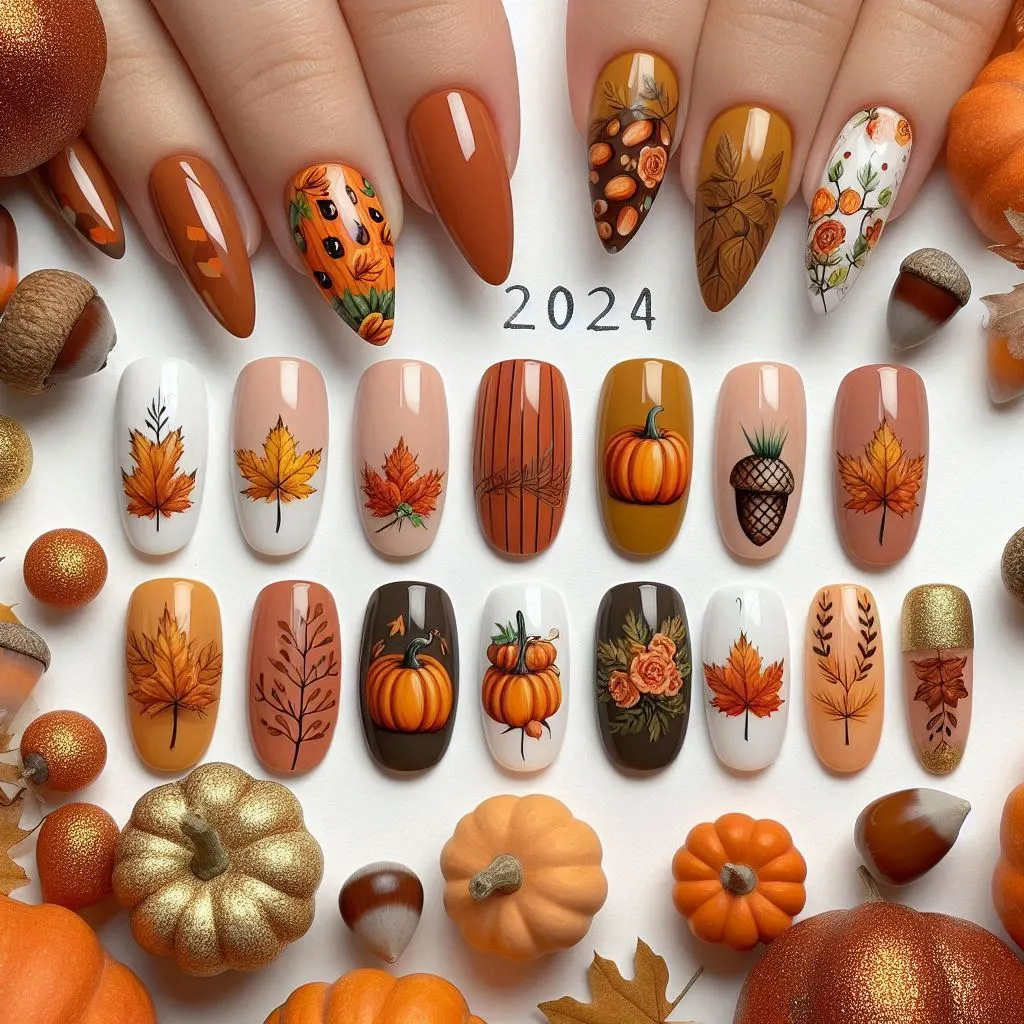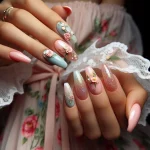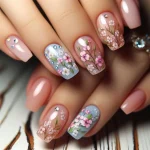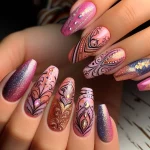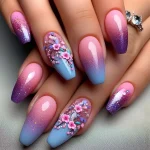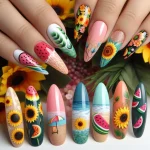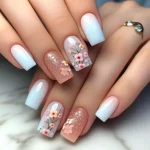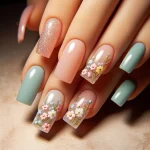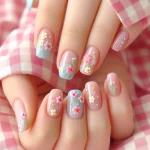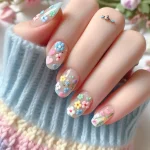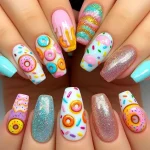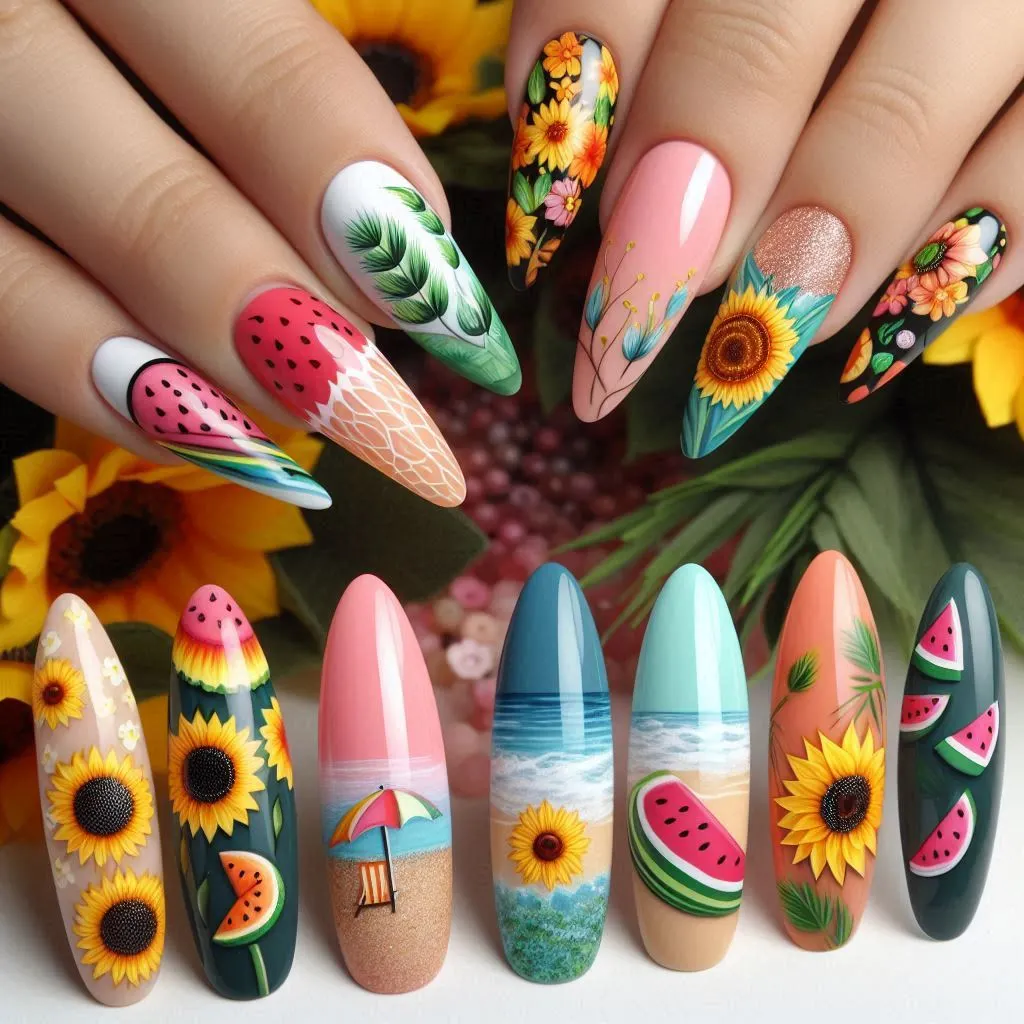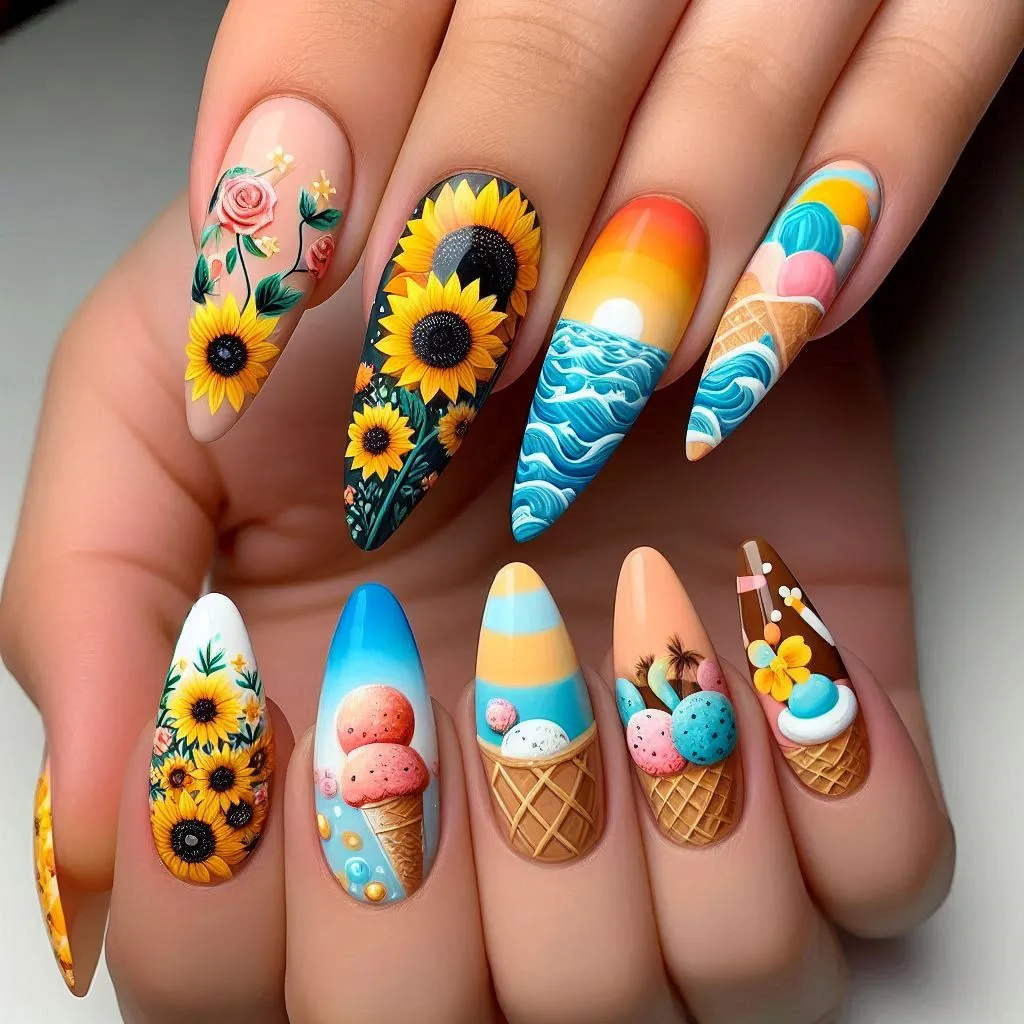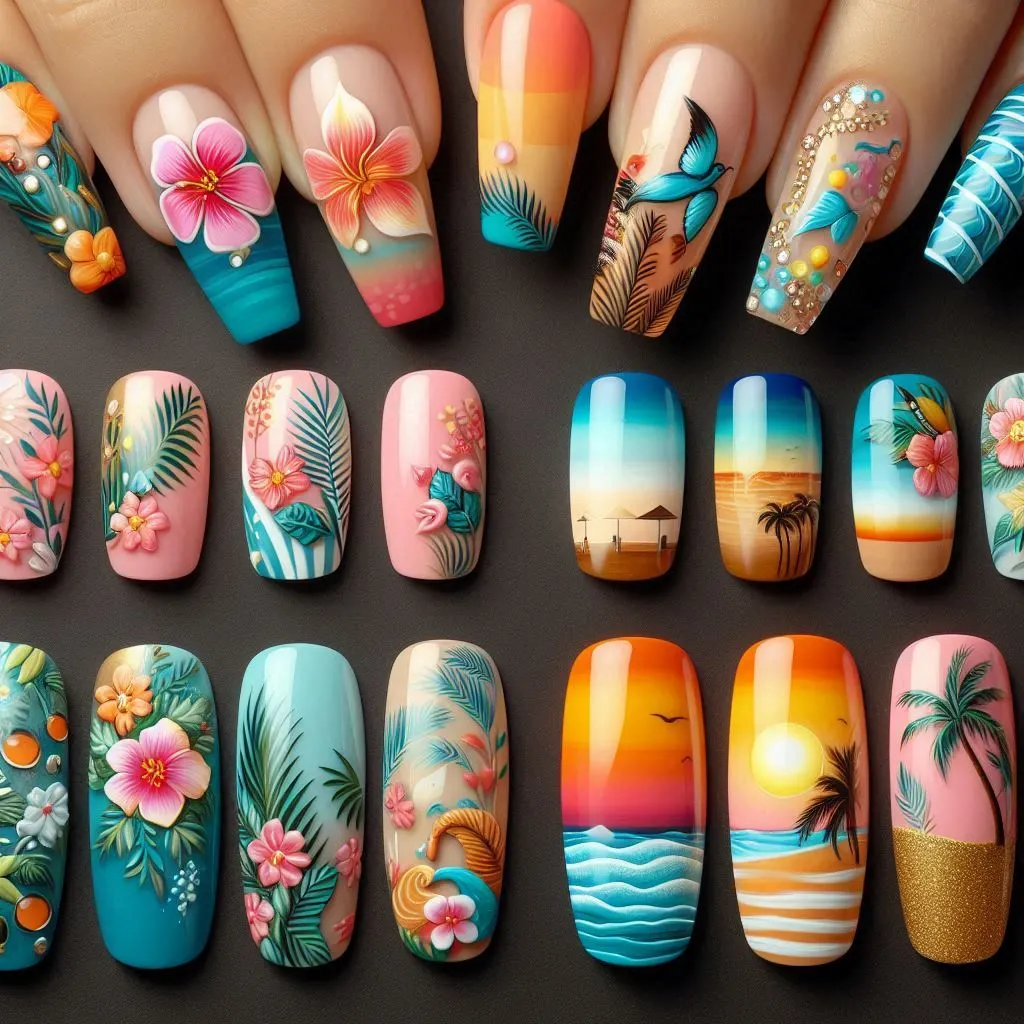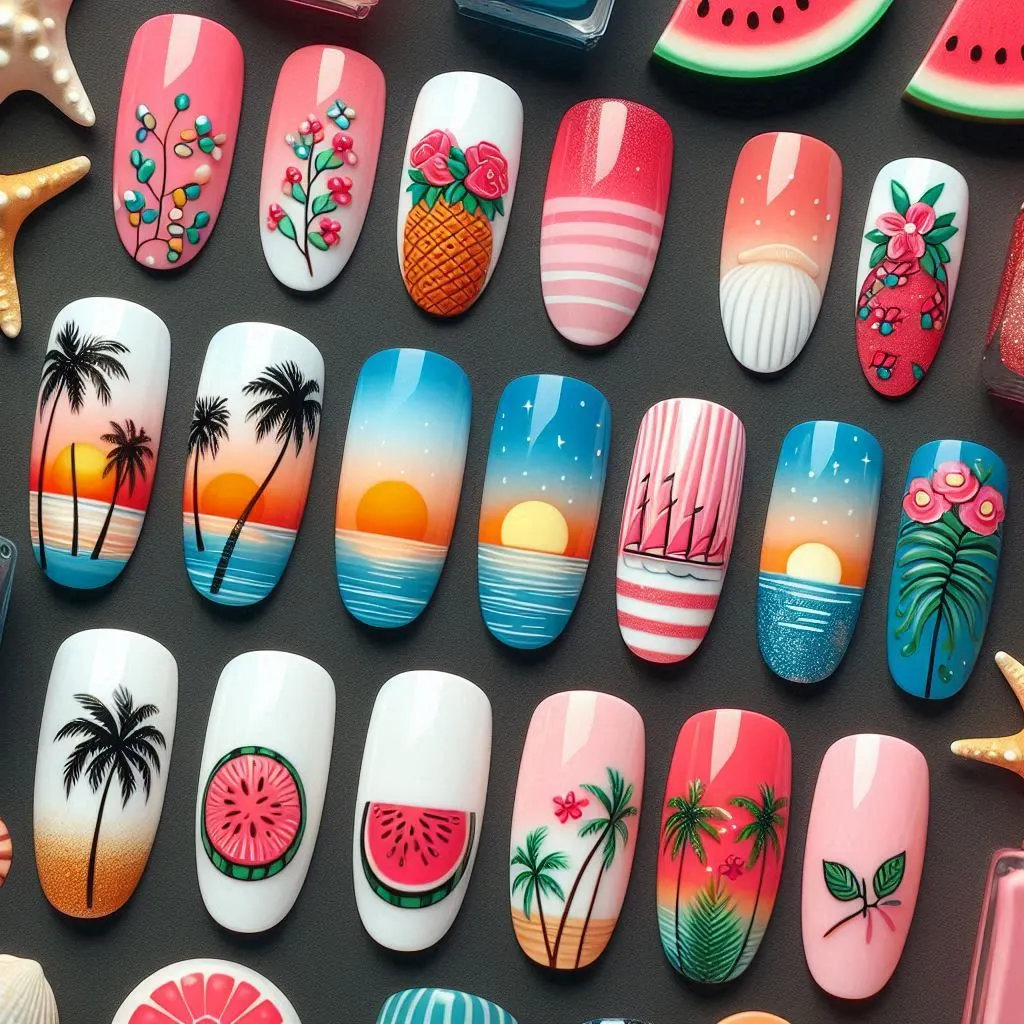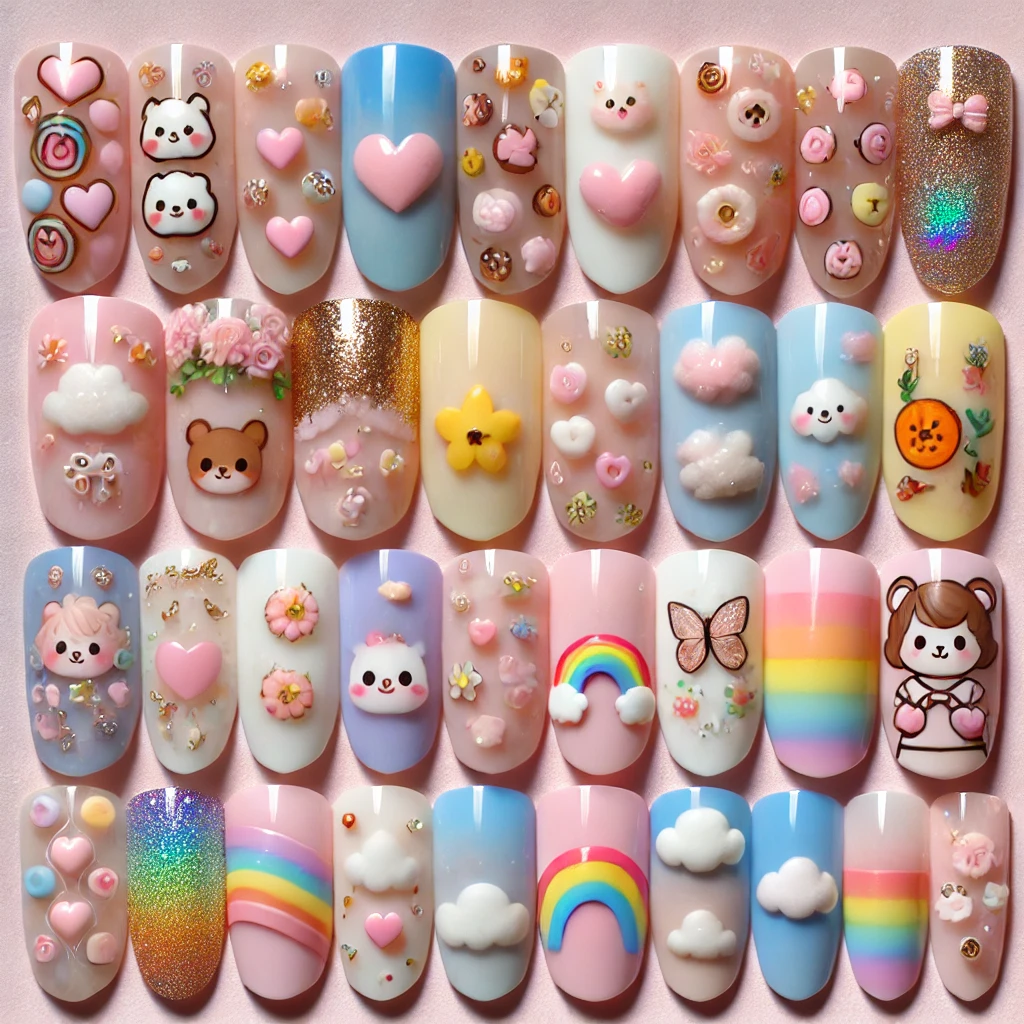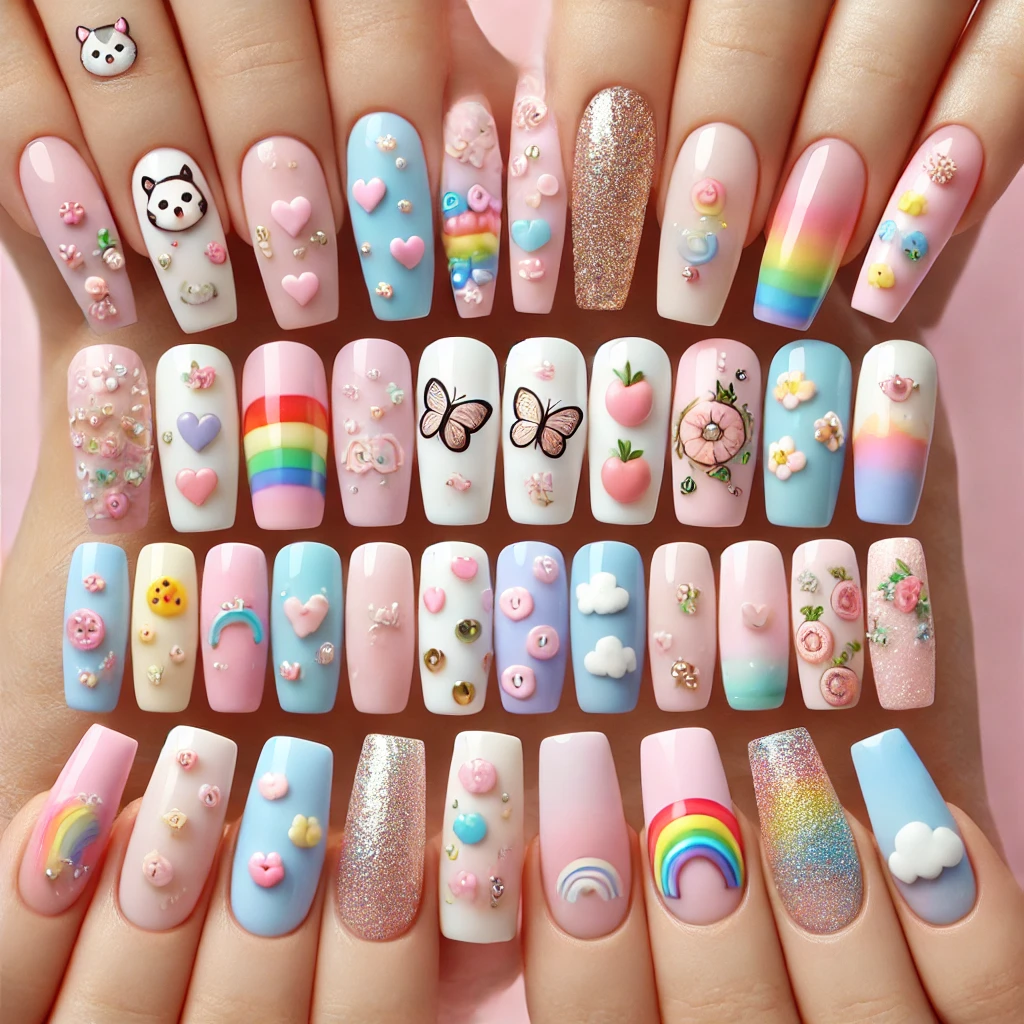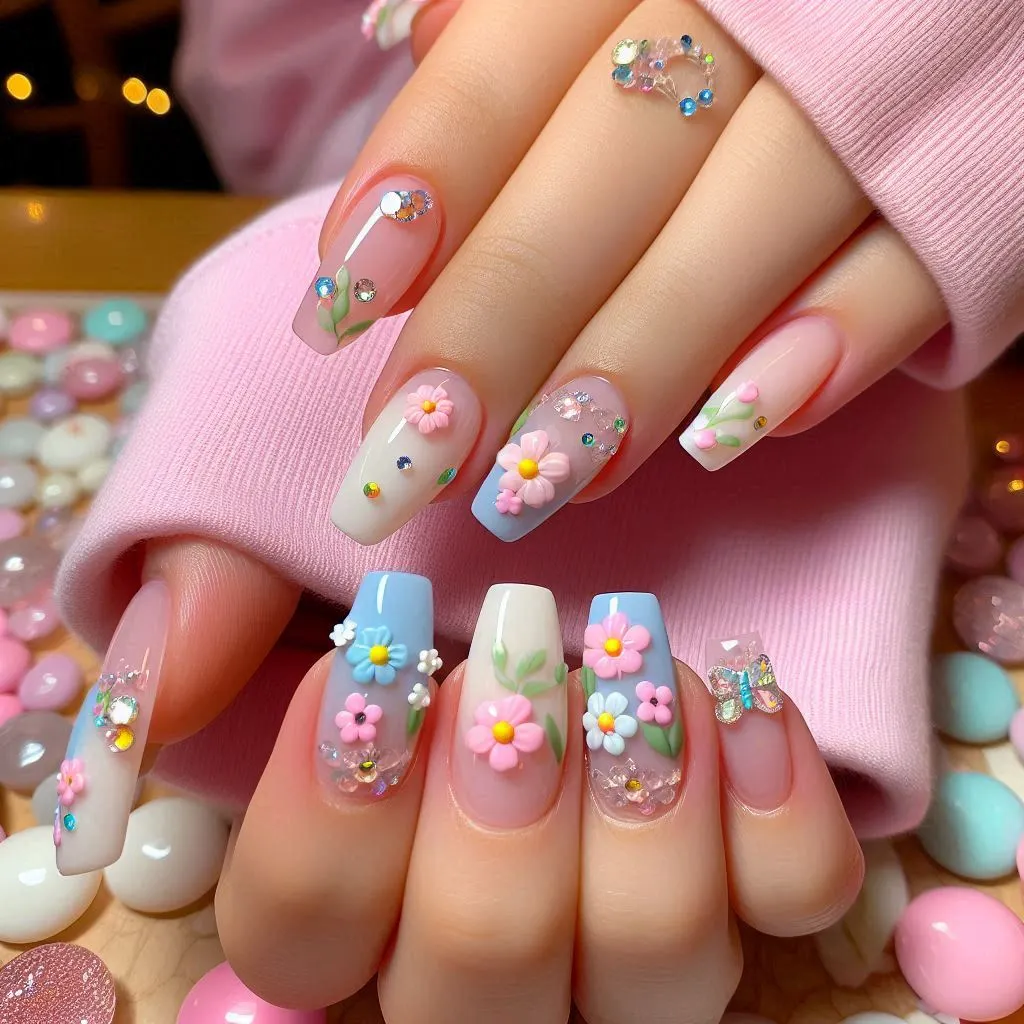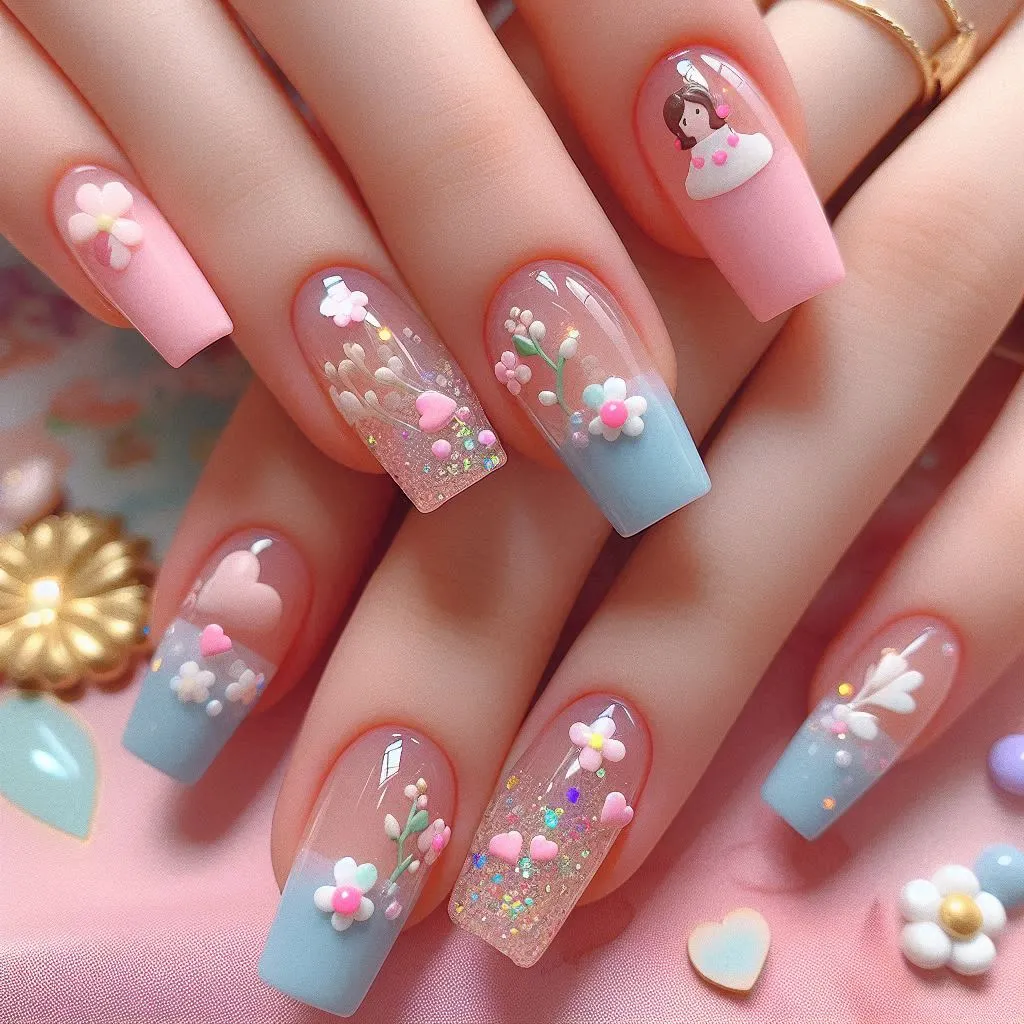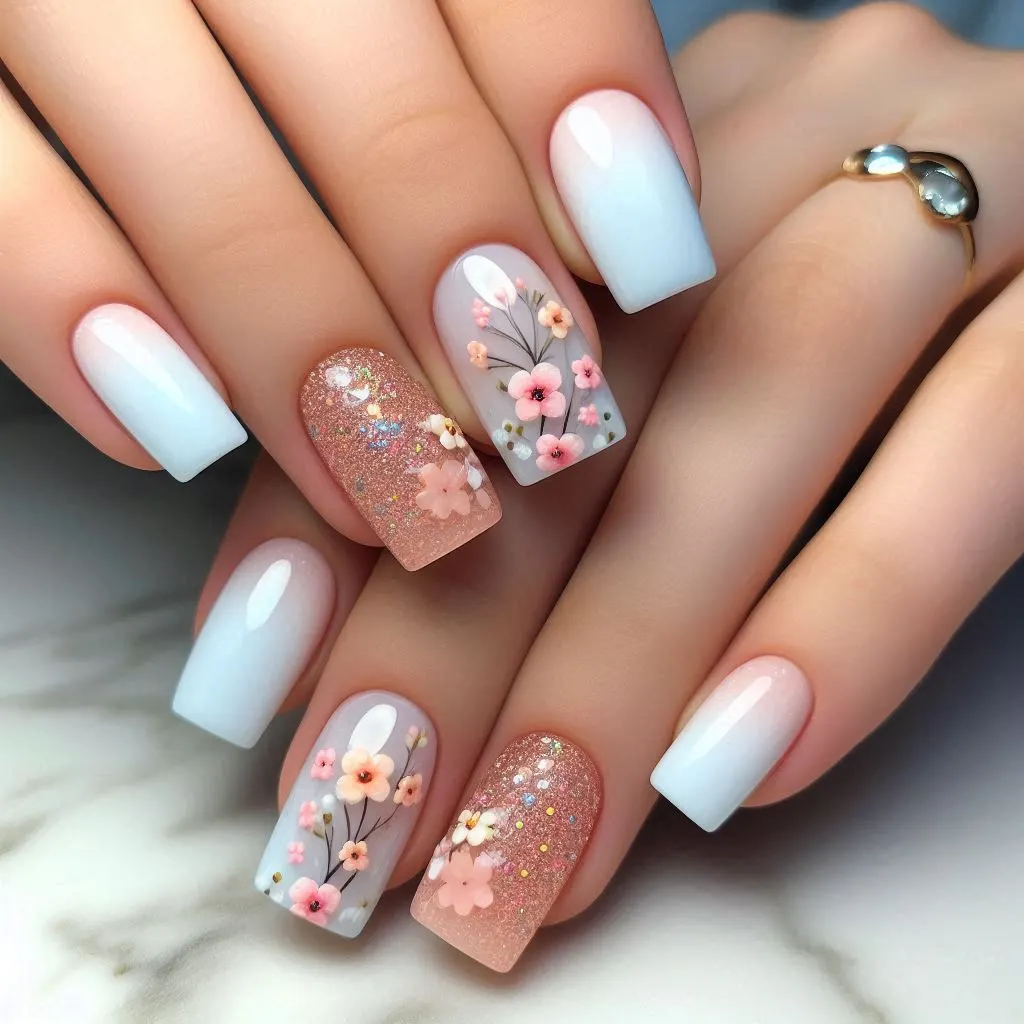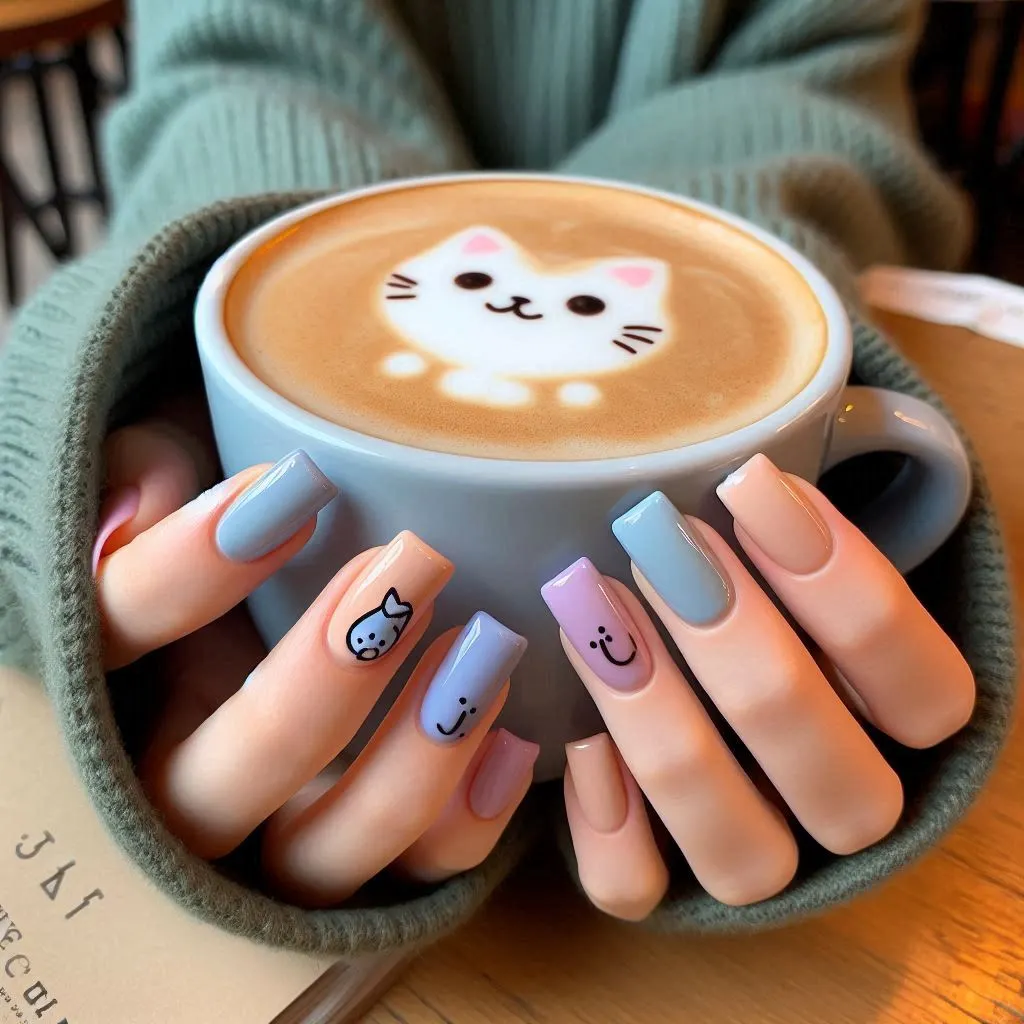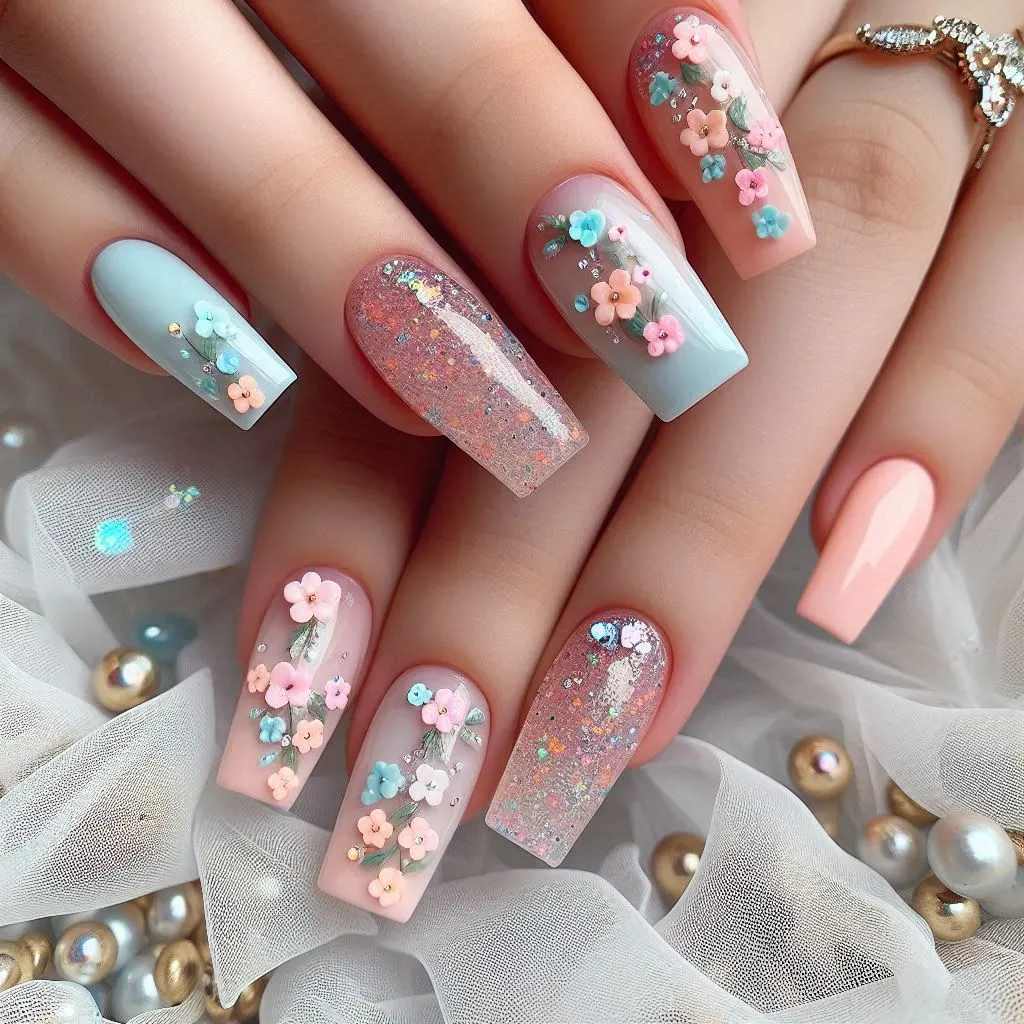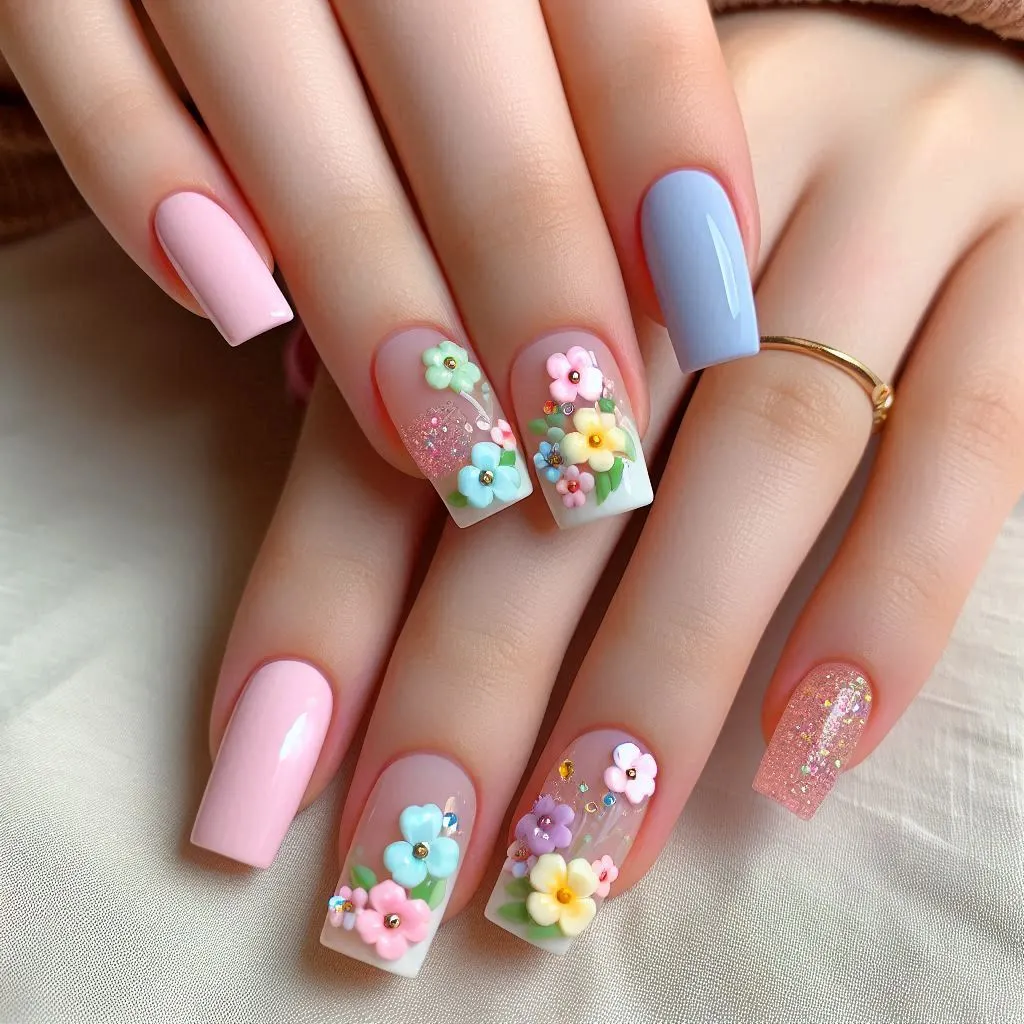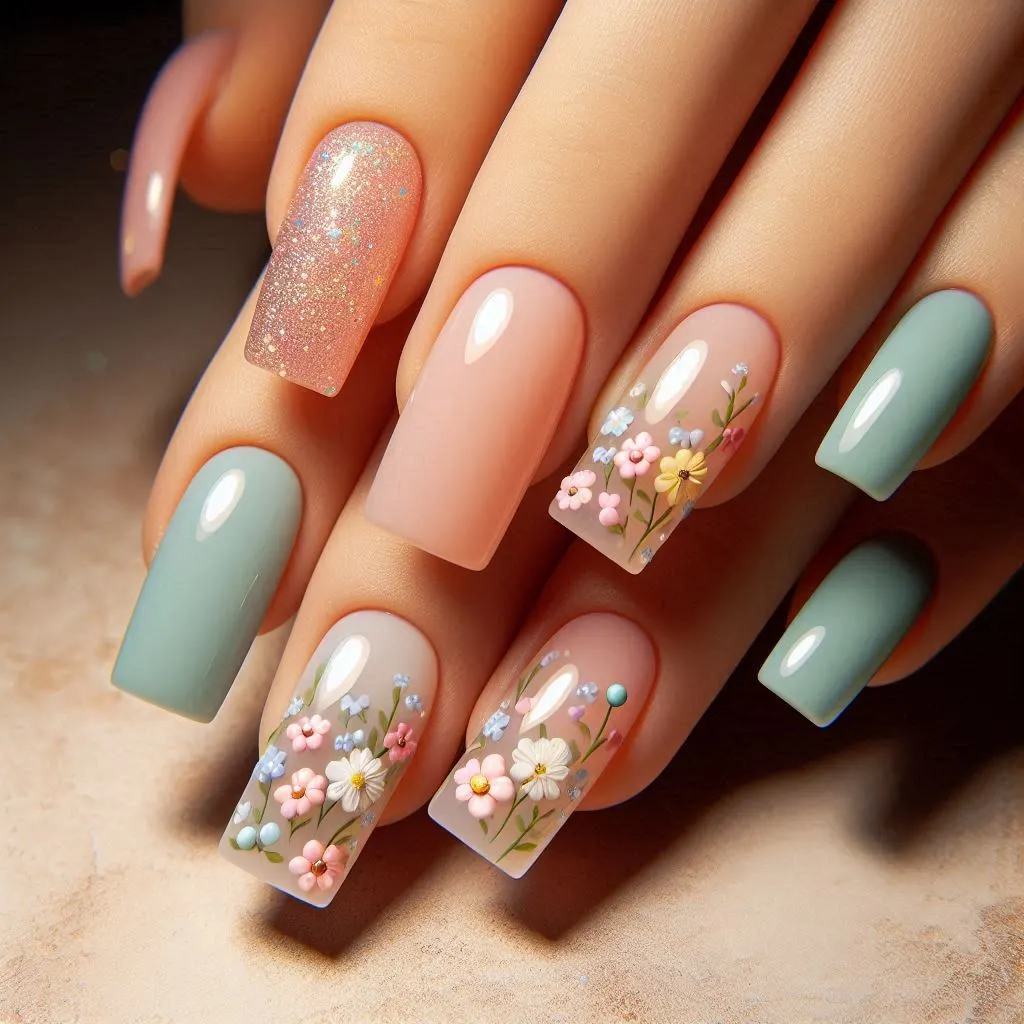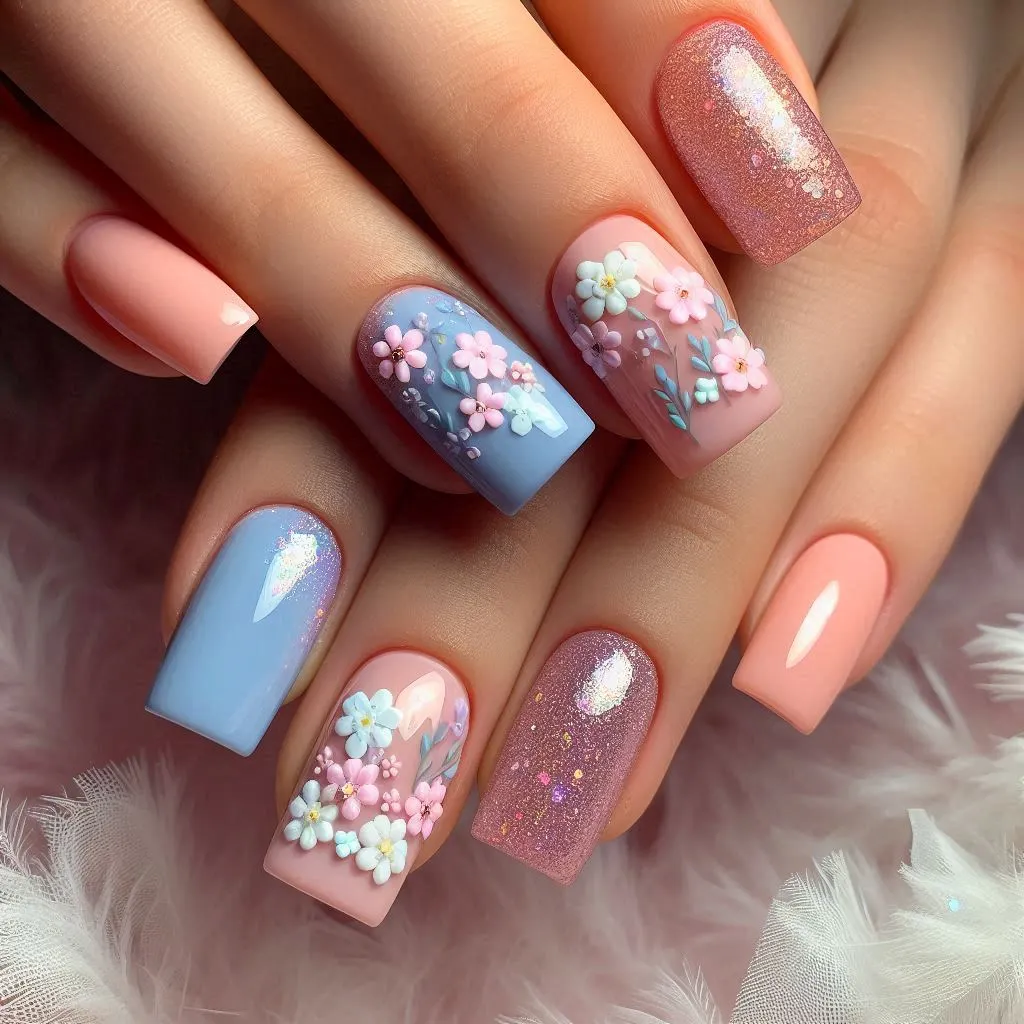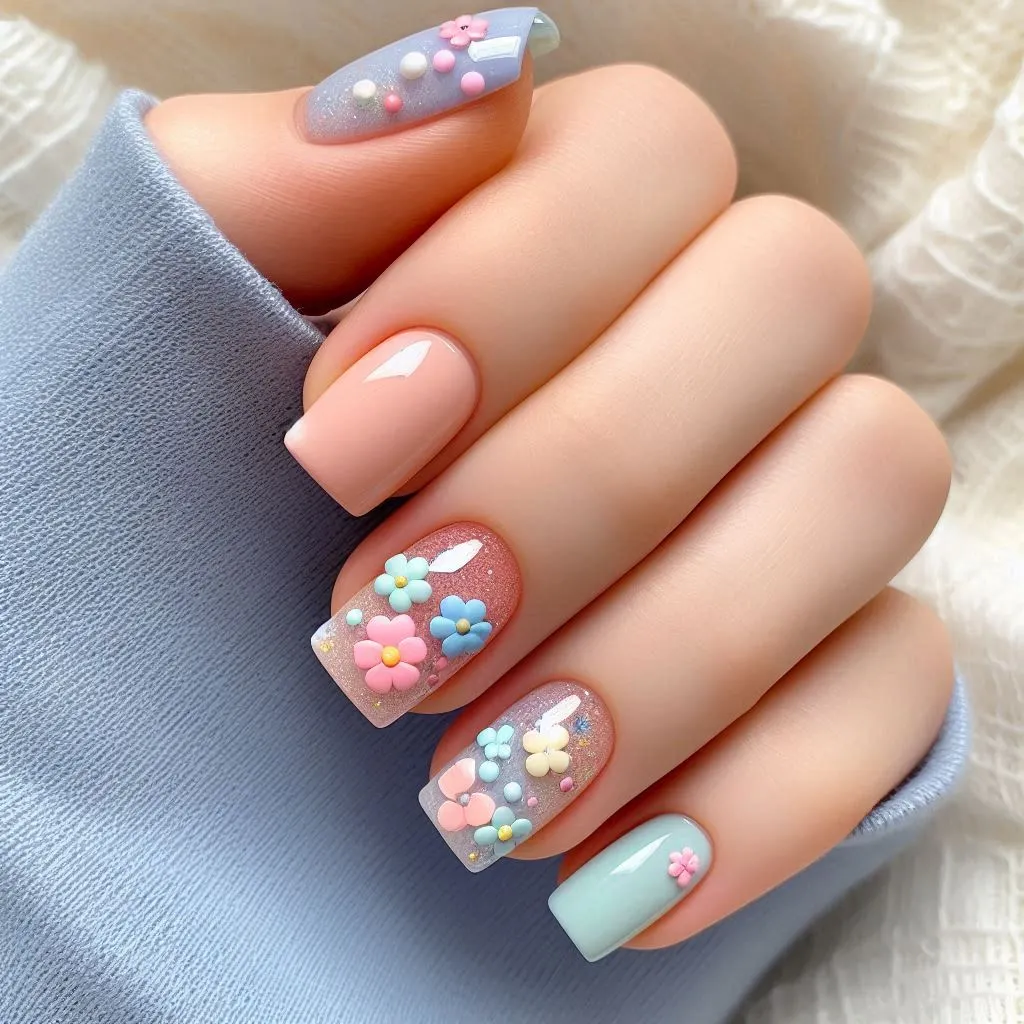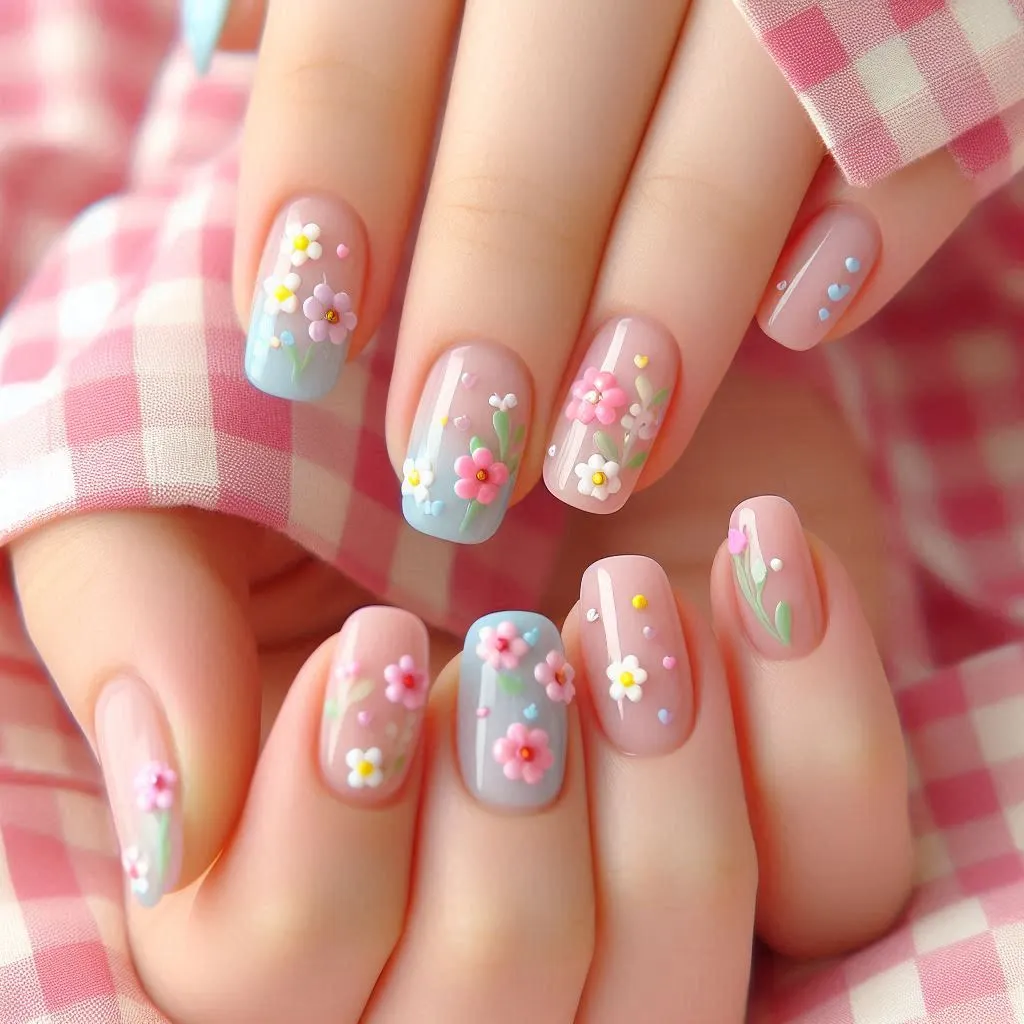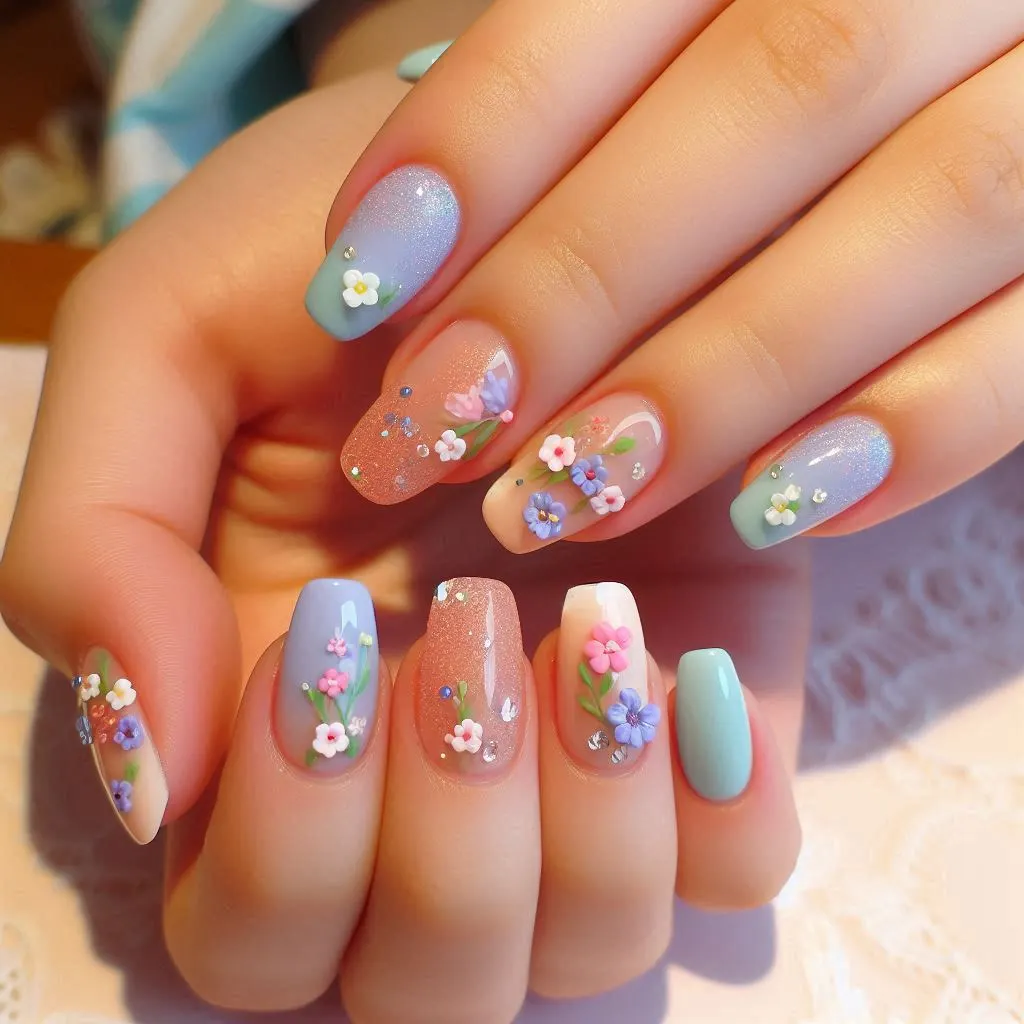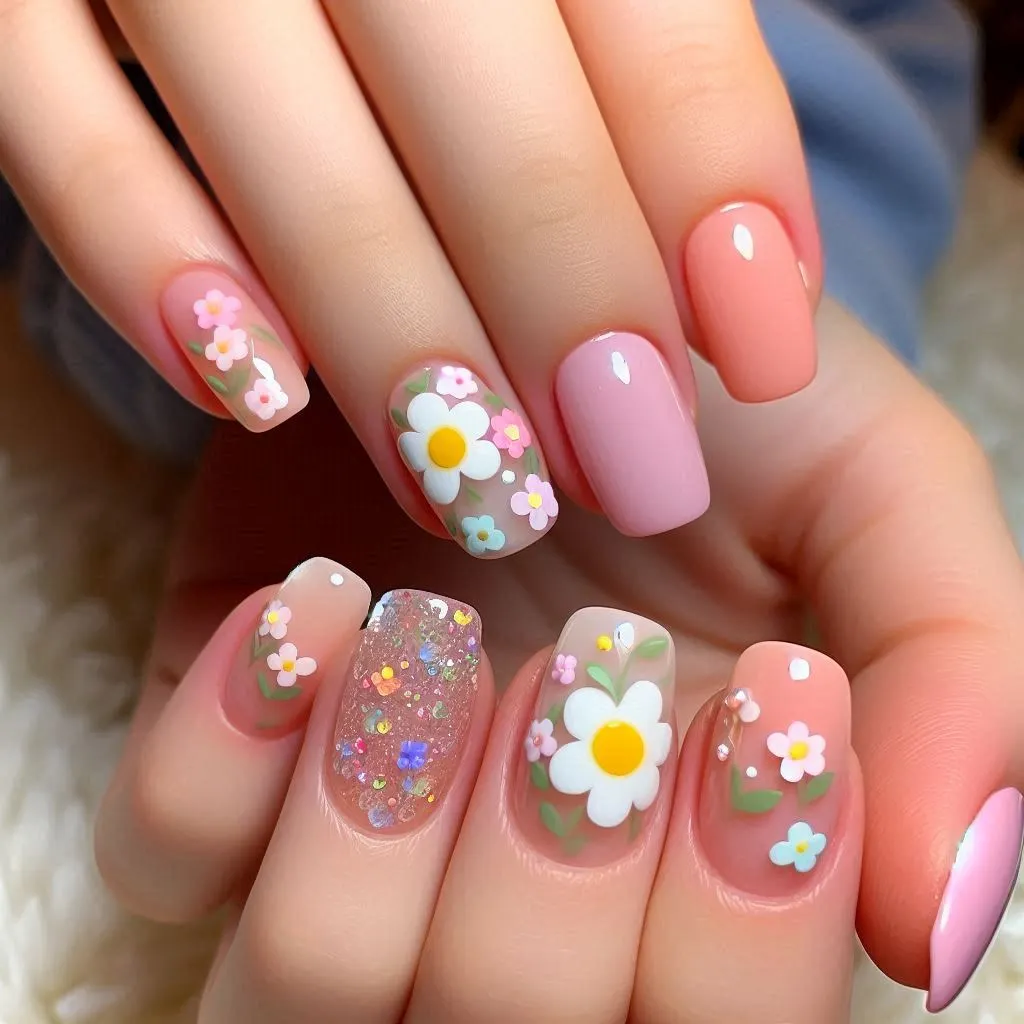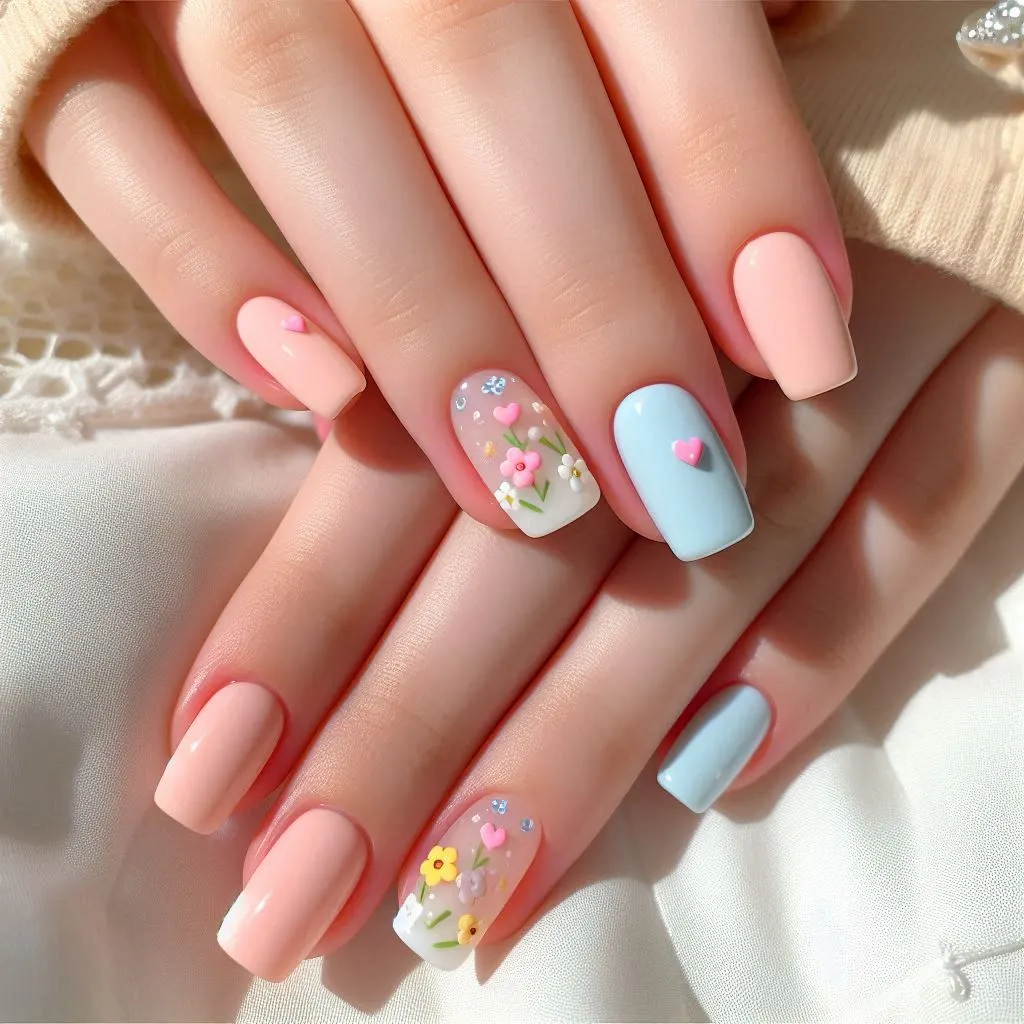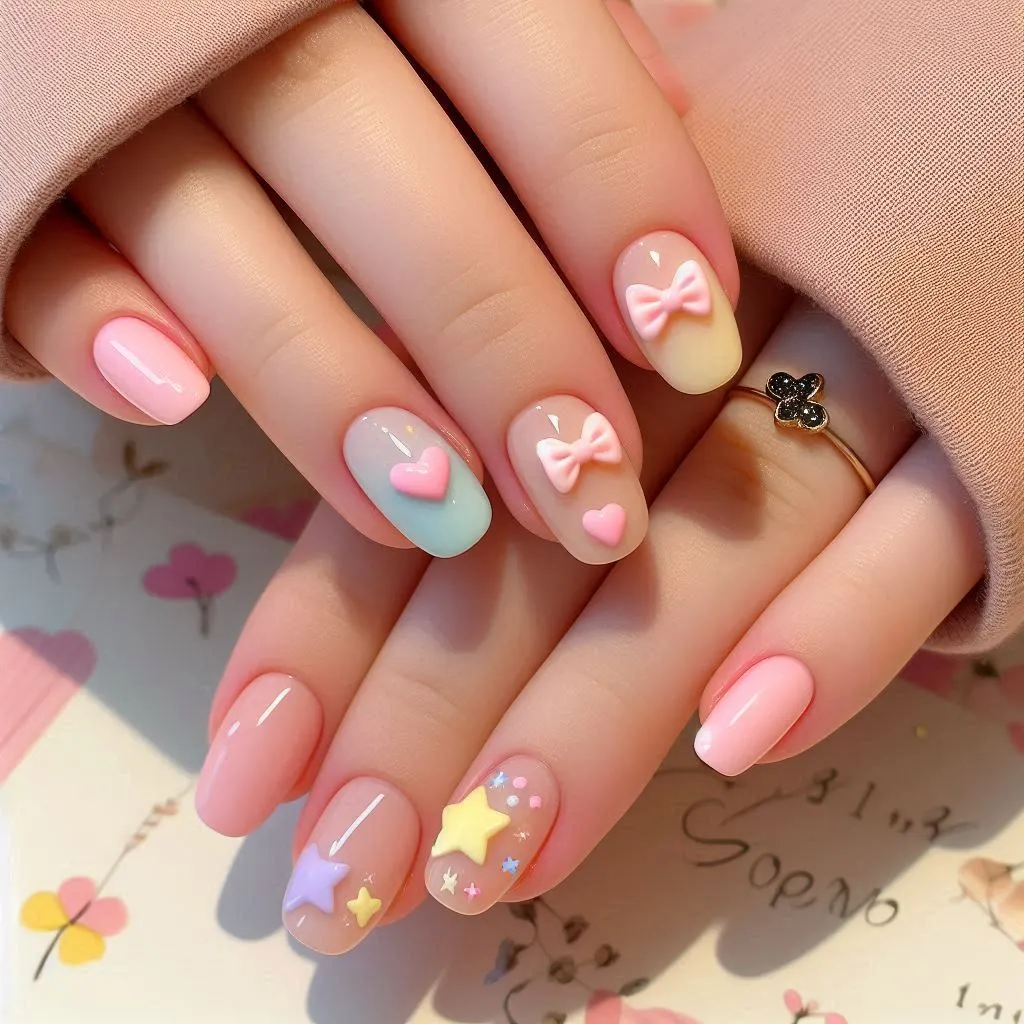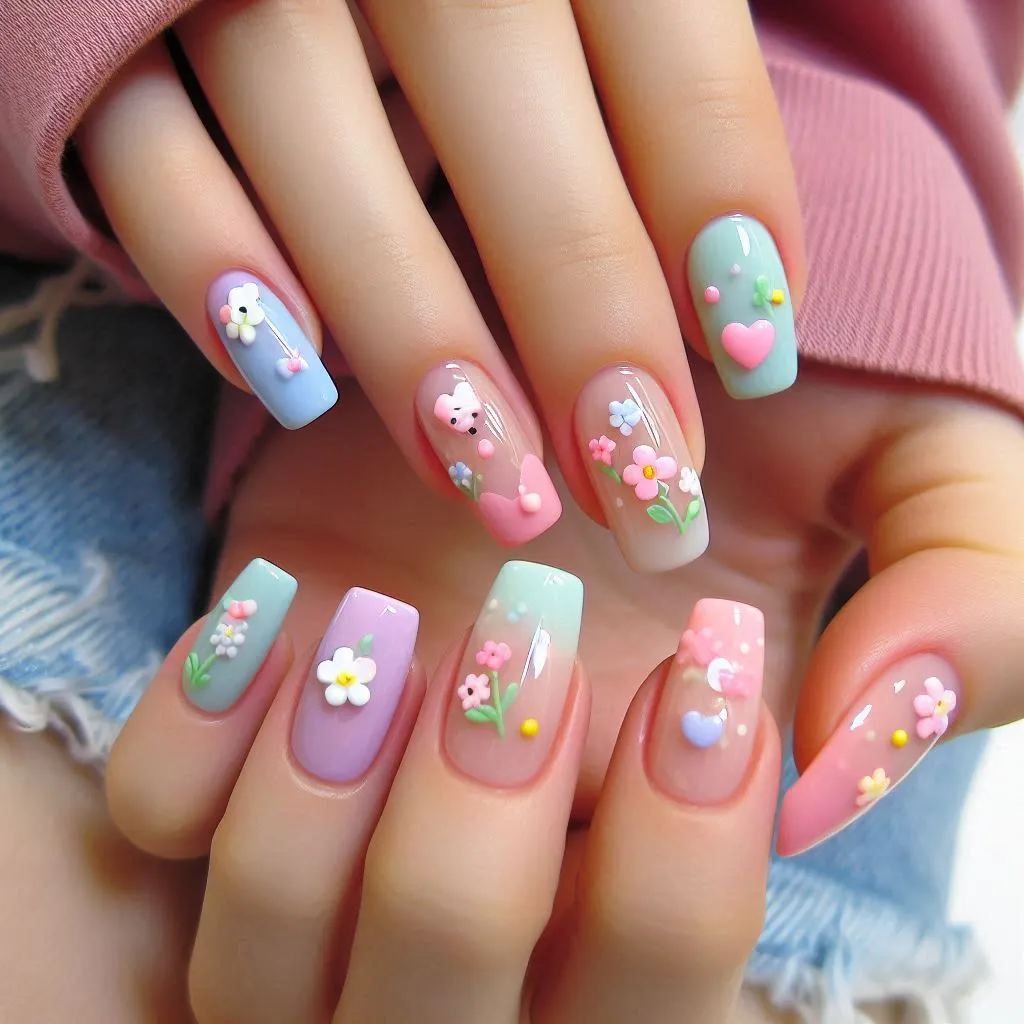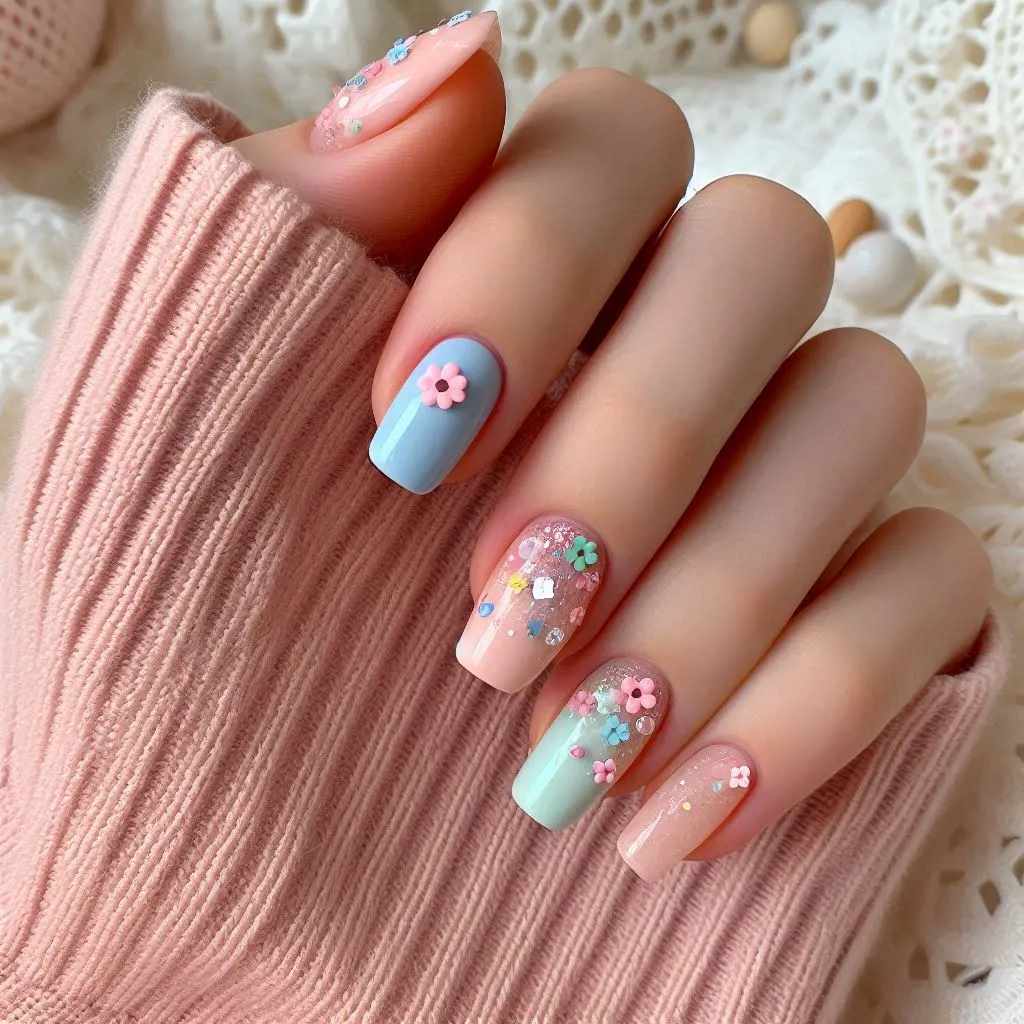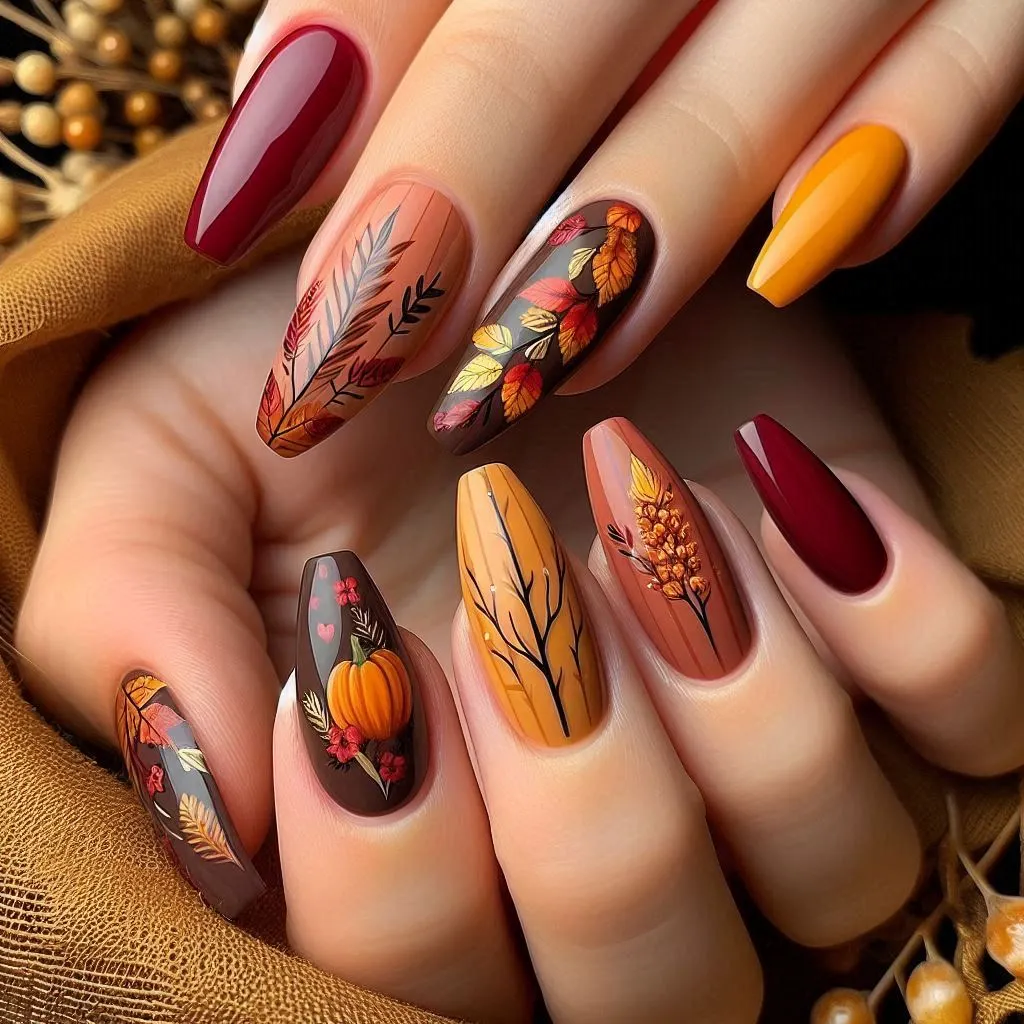
Table of Contents
Fall Nails 2024: Trendy Colors, Designs, and Styles
As we step into Fall 2024, nail trends are moving toward rich colors, bold textures, and inventive designs that capture the spirit of the season. From earthy hues to sophisticated jewel tones, there’s something for everyone. Whether you’re looking for a classic style or something edgy, here are the top nail trends to try this fall.
1. Warm Earthy Tones
Earth-inspired colors are back in a big way this fall. Think rust, terracotta, deep olive, and burnt sienna—shades that capture the cozy essence of autumn. These colors are timeless, making them ideal for a chic, everyday look. Paired with a matte or glossy finish, they work well with short nails and square shapes.
- How to Achieve It: Start with a base in earthy tones like clay or caramel, then add minimal accents, such as gold lines or small dots, to elevate the design while keeping it understated.
2. Velvety Jewel Tones
Jewel tones—emerald green, sapphire blue, amethyst purple—are the season’s highlight. This year, the emphasis is on achieving a velvety, soft finish. These shades bring an elegant feel to any outfit and look especially striking on longer nails like almond or stiletto shapes.
- How to Achieve It: For a soft, velvet effect, apply a matte top coat over a deep jewel tone. For added drama, consider adding tiny gold or silver embellishments to give the nails a luxurious, opulent feel.
3. Modern French Tips
The classic French manicure is being reimagined this fall with deep autumn shades, curved tips, and asymmetrical designs. Instead of the traditional white tips, try colors like burgundy, chocolate brown, or forest green. Some are even blending two tones at the tips or opting for a unique shape for a more playful approach.
- How to Achieve It: Apply a clear or nude base coat, then add your favorite autumn shade to the tips. Experiment with curving or diagonal lines to add a modern twist to the classic look.
4. Matte Metallics
Metallic nails are back but with a matte spin. Matte gold, copper, and bronze are replacing high-shine chrome, making these shades perfect for fall. Matte metallics offer a unique look that’s both modern and sophisticated, ideal for making a statement without going over the top.
- How to Achieve It: Choose a metallic shade and apply a matte top coat. This combination works well with both short and long nails, especially in square or oval shapes.
5. Dark and Dramatic Gothic Nails
For those who love a bold statement, dark colors with a hint of sparkle or iridescence are trending. Charcoal, deep wine, midnight blue, and even black add a gothic glam touch that’s perfect for autumn nights. These colors work well with different nail shapes but look especially edgy on longer, tapered nails.
- How to Achieve It: Choose a deep base color, then add a touch of glitter or a holographic top coat for a subtle shimmer. This look pairs well with coffin and stiletto nail shapes.
6. Textured Accents
Texture is huge this fall, with 3D elements like pearls, studs, and raised patterns taking center stage. These textured designs add depth and interest, especially when paired with neutral or monochrome colors. Knitted effects, marble textures, and embossed patterns are just a few ways to incorporate texture.
- How to Achieve It: Use gel or acrylic to create embossed patterns or add small pearls for a 3D effect. Textured accents look great on a single accent nail or spread across all nails for a bolder statement.
7. Gradient and Ombre Looks
Gradient and ombre nails are still popular, especially with autumn tones. These designs can range from subtle fades to vibrant color-blocking. Combining shades like burnt orange, caramel, and wine creates a cozy and cohesive color story that’s perfect for the season.
- How to Achieve It: Blend fall colors on a sponge and dab them onto your nails for a seamless transition. Alternatively, try horizontal ombre across all nails, where each nail is a different shade within the same color family.
8. Seasonal Motifs and Patterns
Seasonal nail art brings a touch of fun to your manicure. This fall, expect to see Halloween-inspired designs with pumpkins, spiders, and ghosts, as well as autumn leaves, acorns, and cozy sweater patterns. These are great for shorter nails, where details can pop without feeling too overwhelming.
- How to Achieve It: Use nail stickers or hand-paint details with a fine brush. A nude or dark base helps seasonal motifs stand out while keeping the design festive yet sophisticated.
9. Bold Color-Blocking
For those who love a modern look, color-blocking is a major trend. Fall color-blocking combines deep blues, greens, and browns with lighter neutral tones. Color-blocking works best with square and almond-shaped nails, where you can create clean lines and geometric patterns.
- How to Achieve It: Use nail tape to divide the nails into sections and apply contrasting colors. This design is versatile and allows for endless customization, from high contrast to monochromatic color-blocking.
10. Classic Reds with a Twist
Red is a classic nail color that never goes out of style, but this fall, it’s all about adding a unique twist. From deep cherry and oxblood to more vibrant scarlets, red nails are being paired with gloss, shimmer, and glitter for added flair.
- How to Achieve It: Choose a shade of red that suits your skin tone, then add a top coat with shimmer or opt for red with gold flakes for a festive touch. Red nails look stunning on both short and long nails, making it a versatile choice.
Bonus Tip: Nail Shape Matters
Nail shape can elevate or transform any design. This fall, almond, coffin, and square shapes are in style. Almond shapes are ideal for softer, feminine designs, while square and coffin shapes are better for edgy, bold designs like matte metallics or gothic glam.
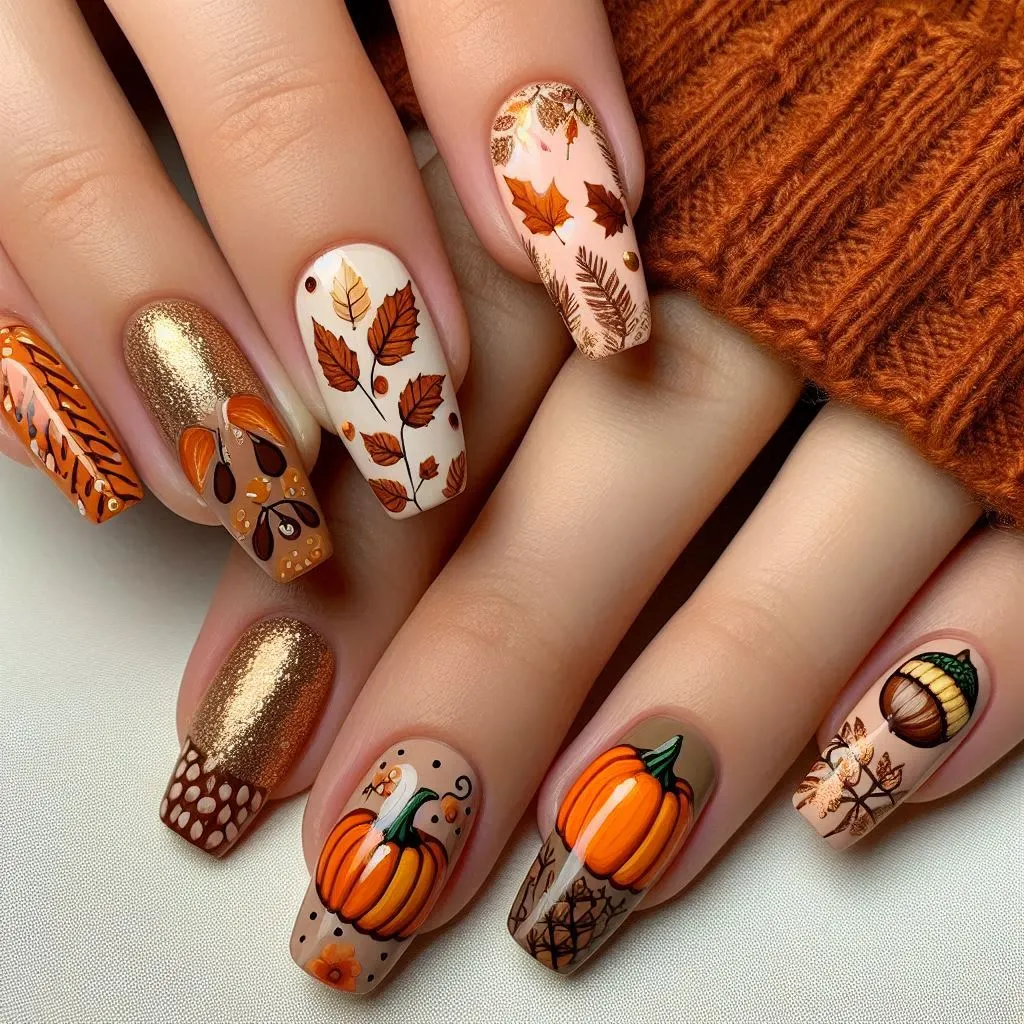
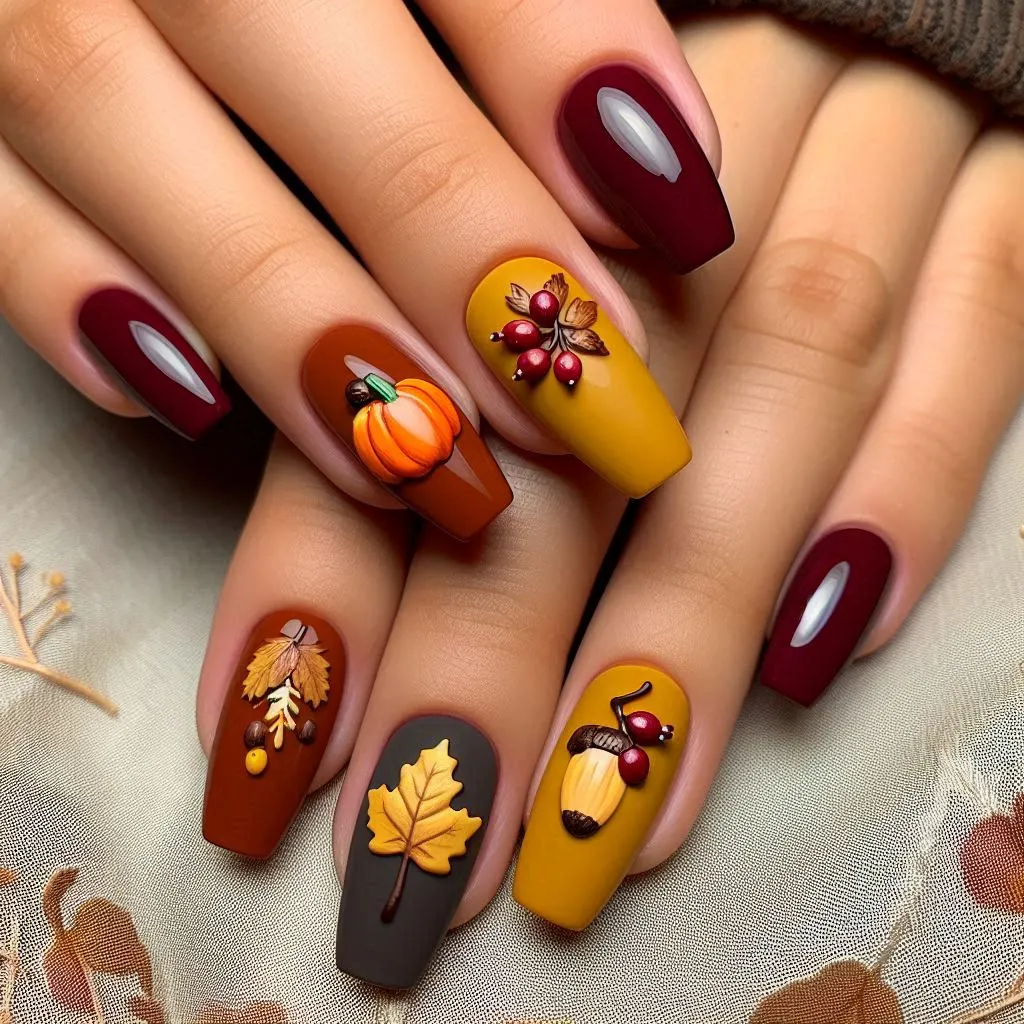
These Fall 2024 nail trends bring new ideas for everyone. Whether you lean toward classic styles or want to try something experimental, there’s no shortage of designs and colors to explore this season. Embrace these trends to create a look that’s stylish, seasonal, and uniquely you!
Toy Poodle: The Perfect Petite Companion – love a happy home (loveahh.com)
- Best Perfume for Women Top Picks for Every Style 2025
- Amazon Best Sellers in Skin Care Products Top 10 2025
- Perfume: Everything You Need to Know 2025
- Burberry Her Perfume: A Deep Dive 2025
- Ariana Grande Perfume: A Complete Guide 2025
- YSL Perfume: A Legacy of Luxury and Elegance 2025
- Sol de Janeiro Perfume: A Luxurious Fragrance 2025
- Billie Eilish Perfume 2025 In-Depth Guide
- Delina Perfume: A Comprehensive Guide 2025
- Kayali Perfume 2025 In-Depth Guide
- Miss Dior Perfume 2025 In-Depth Guide
- Valentino Perfume 2025 In-Depth Guide
- How to Increase Charisma: Women’s Edition 2025
- Amber: That Captivates the World 2025
- What Color Is Amber 2025?
- Makeup Looks: 2025 Finding Your Unique Style
- Polygel Nails: 2025 Nail Revolution
- Mouse Pretty Makeup 2025 In-Depth Guide
- Builder Gel Nails: 2025 Perfect, Long-Lasting Nails
- Trendy Short Gel Nails: 2025 Style Meets Practicality
- Makeup Bag: 2025 Your Beauty Companion
- Wedding Makeup Looks 2025 In-Depth Guide
- Christmas Makeup Looks: 2024 Glamorous Ideas
- 80s Makeup Looks 2025 In-Depth Guide
- 100 Cute Makeup Looks 2025 In-Depth Guide
- Natural Makeup Looks: 2025 Enhance Your Natural Beauty
- How to Remove Gel Nails Safely at Home
- Ombre Nails: 2024 Gorgeous Manicure Trend
- Autumn Nails Trends: Best Fall Nails
- Cute Fall Nails: Trendy Nail Ideas
- Fall Nails 2024: Trendy Colors, Designs, and Styles
- Summer Nails 2024: Top Trends
- 10 Cute Acrylic Nails Ideas to Elevate Your Look
- Beauty of Square Short Acrylic Nails: A Practical Guide
- Square Short Acrylic Nails: Stylish and Practical
- Cute Short Acrylic Nails Ideas: Trendy Look
- Cute Short Acrylic Nails: Perfect Look
- Best Short Acrylic Nails Ideas(15 Types)
- Trendy Short Acrylic Nails Ideas(13 Types)
- Short Acrylic Nails: Perfect Style with Practicality
- Short Acrylic Nails: Stylish, Durable, and Practical
- Acrylic Nails Ideas: 10 Trendy Designs
- How to Remove Acrylic Nails(1 In-Depth Guide)
- French Tip Nails 2025 In-Depth Guide
- French Tip Nails: A Timeless Style with a Modern Twist
- How to Achieve the Perfect Glazed Donut Nails

